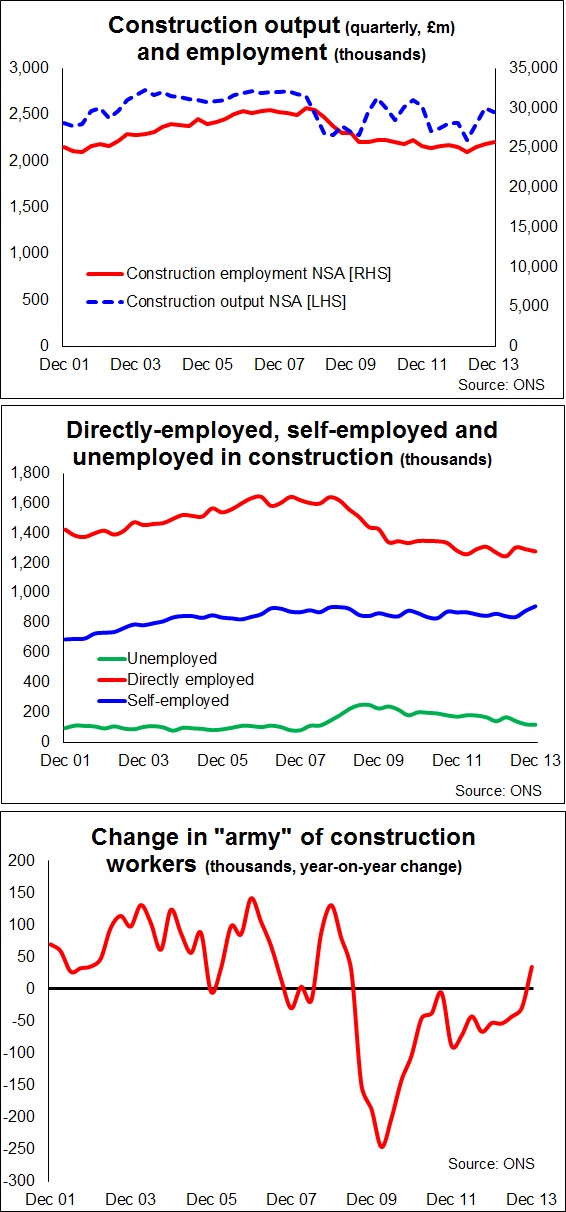Women lead the charge as construction employment rises
Employment in construction grew in the final months of last year 2.6% relative to the same period a year earlier, according to the latest ONS data, providing further evidence of an expanding industry.
The figures suggest there were about 56,000 more people working in construction at the end of last year than at the end of the year before.
As we can see from the top graph there is a slight rise in employment that corresponds to a rise in work done.
But below this overall figure lies a few interesting nuggets.
For instance the growth over this period came more from women (31,000) than from men (24,000), despite the fact that about women account for less than 14% of those employed.
You don’t want to read too much into this, but it does suggest some of the roles in construction where women tend to be more prevalent may be being restored – we might for instance look to sales, marketing or administrative functions.
Certainly roles such as these would have taken a beating as the recession bit and it’s worth noting that proportionately women took a much bigger hit than men in terms of job losses through the recession.
It’s only supposition, the data do not allow us to see exactly what roles are being created, but if firms are rebuilding their administrative and marketing teams, this is a healthy sign. It indicates that firms are more confident in the future and are rebuilding the infrastructure of their businesses with a view to growth.
The fact that the increase in the number of women came from growth in employee jobs not self-employed roles lends some support to the supposition that the increase in employment of women is within white collar rather than blue collar jobs. It was direct employment where the cuts were deepest for women.
The number of women in construction is still more than 20% down from peak against a bit more than 13% for men, so I wouldn’t read the faster increase in growth of women in the industry as a sign of times changing. Not yet at least.
Another nugget is that the data showing a continued rise of self-employment. Self-employment rose 5.8% compared with 0.7% for direct employees. There are now more self-employed in construction than at the peak. And as the second graph shows the gap between the number of self-employed and directly-employed is shrinking. More than 45% of men in the industry are self-employed.
A third nugget is that the overall “army” of construction workers which include those that are unemployed has risen for the first time since the recession. This can be seen in the third graph. What is encouraging is that the growth came despite a fall in unemployment. The number of unemployed former construction folk is down to the lowest level since mid 2008.
While this is good news for the people concerned, it is unsettling for the industry as a whole in that it highlights again the desperate need to train.
Meanwhile for those who are looking at the top graph and seeing increased productivity, it is worth noting that the figures at this level might be misleading. Each sub-sector of construction has a different labour usage, so changes in workload mix impact on the demand for labour as well as growth.
It’s worth noting that one sector that came out of the recession larger rather than smaller was infrastructure, which tends to employ far fewer people for a given amount of output.
Looked at overall, the figures are positive, encouraging even, but far from spectacular.
